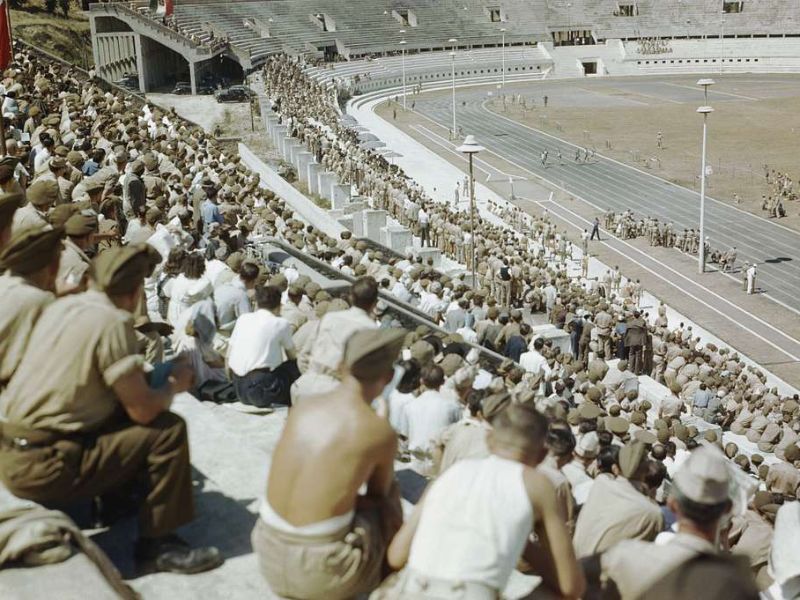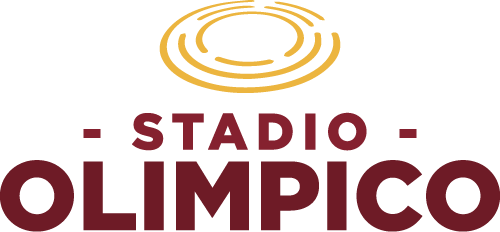The Birth of the Mussolini Forum
More than just a football arena, the Stadio Olimpico in Rome stands as a physical reminder of how architecture was used to project ideology during Italy’s Fascist era. The Mussolini Forum is visible not only in its original name and function but in its scale, symbolism, and relationship to the larger Foro Mussolini complex (renamed Foro Italico after World War II).
In the early 20th century, Fascist Italy sought to promote a national identity based on discipline, strength, and classical heritage. The regime embraced sport as a means to forge what Mussolini called ‘the new Italian,’ physically fit and ideologically loyal. Stadiums, especially public ones, became monumental stages where this vision could be both symbolically and literally enacted.
Symbolism and Political Utility

The Stadio Olimpico’s origins lie in Mussolini’s ambitious plan to construct the Mussolini Forum—a vast sports complex at the base of Monte Mario, conceived as a modern-day imperial forum. The complex was designed by Enrico Del Debbio beginning in 1928, with the Stadio dei Cipressi (the precursor to the Stadio Olimpico) and the Stadio dei Marmi as its two main arenas. The former hosted large sporting events, while the latter served as a training ground and venue for political youth gatherings.
The name ‘Foro Mussolini’ alone evoked imperial power, echoing the ancient forums of Roman emperors. At its entrance, a towering marble obelisk spelled out the dictator’s name vertically—’MUSSOLINI’—while its base was engraved with ‘DUX,’ his chosen title. Surrounding plazas and pathways were adorned with mosaics linking the Fascist regime to mythical Roman origins, equating Mussolini with Romulus and Remus.
Architectural Intent and Media Influence
Although the initial purpose of the Stadio dei Cipressi was to serve as a sports venue, its political utility quickly took precedence. The stadium hosted parades, Fascist rallies, and in 1938, served as the central venue for Adolf Hitler’s state visit to Rome. For the occasion, temporary towers topped with imperial eagles were constructed from a material known as ‘carpilite’—cement mixed with straw—symbolizing spectacle over permanence.
Post-War Reuse of Mussolini Forum and Olympic Revival

The architectural philosophy extended beyond symbolism. Fascist architects like Annibale Vitellozzi and Marcello Piacentini designed stadiums that would impress both in person and through emerging mass media, particularly photography and film. The original Stadio Olimpico design included sunken tiers to harmonize with its natural surroundings and curved seating to foster collective unity, reflecting an ideology rooted in centralized control and mass mobilization.
World Cup Transformation and Legacy
After the fall of Fascism and the renaming of the Mussolini Forum to Foro Italico, the stadium was repurposed for post-war national pride. Yet many elements of its original intent and design remain. When Italy hosted the 1960 Summer Olympics, the Stadio Olimpico—renovated and expanded—became the centerpiece. The original elliptical layout and axial planning were preserved, even as new features were added.
A Stadium with Memory

Another wave of transformation occurred before the 1990 FIFA World Cup. Vitellozzi, who had worked on earlier designs, returned to oversee the addition of a futuristic roof, giant video screens, and a restructured seating plan. Despite these changes, the influence of the original Fascist vision persisted—an enduring stadium rooted in spectacle, symmetry, and centrality.
Today, the Stadio Olimpico hosts both A.S. Roma and S.S. Lazio, as well as national matches and concerts. But beyond its modern use lies a layered history. The Mussolini Forum can still be traced in its monumental geometry, the ceremonial approach via the obelisk-lined avenue, and the architectural vocabulary borrowed from classical Rome to serve a totalitarian narrative.
Conclusion
Though Italy has long since moved past its Fascist past, the Stadio Olimpico remains a living monument to a time when architecture was used to shape ideology. The Foro Italico’s monuments, the mosaics beneath spectators’ feet, and the layout of the stadium all preserve echoes of an era when sport and spectacle were tools of political power. Understanding the Mussolini Forum allows us to read Rome not only as an open-air museum of ancient empires, but also of modern regimes that sought to project dominance through stone, steel, and spectacle.
